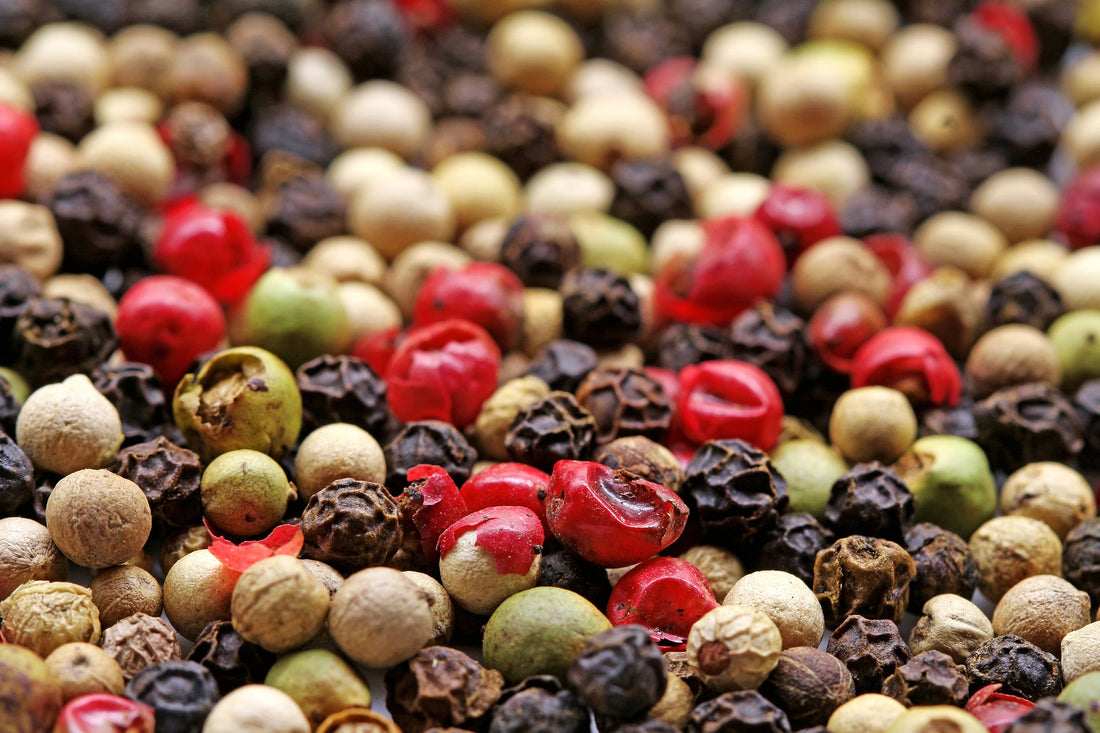
What’s a meal around the dinner table without salt and pepper? These seasoning staples can enhance your dish’s flavour, and black pepper is ideal for adding a little kick. It’s easy to pop to the supermarket and pick up a packet of peppercorns, but have you ever thought about growing your own?
How to grow black pepper from seeds
Growing your own produce can be incredibly rewarding. If you’re looking to flex your green thumbs and take your veg patch to the next level, why not plant and harvest your own black peppercorns?
Once you get the hang of it, growing your own peppercorn plant is easier than you might first think, and it could even save you some pennies. (Fun fact: the humble peppercorn was, in fact, a valuable asset and used as currency in Ancient Rome).
To get started on growing your own pepper, you need to source your peppercorn seeds. Unfortunately, due to the way peppercorns are dried and processed, those sold at the supermarket are unlikely to sprout. Therefore, you can’t just remove a couple from the grinder and pop them in the soil. Instead, it’s best to get your pepper seeds from a garden centre.
How long do peppercorns take to grow?
It usually takes pepper plants a couple of years to produce flowers and peppercorns, so growing them takes a little patience. However, the plants themselves are pretty to look at in the meantime. While waiting for your fiery peppercorns to grow, you can enjoy the plant’s bright green leaves.
What environment do peppercorn plants like?
The pepper plant (Piper Nigrum) is native to India, so it likes warm temperatures. However, under the right conditions, you can grow and harvest your own peppercorns anywhere, including in the UK.

A conservatory is an ideal environment, as pepper plants thrive in bright or dappled spaces where they can get lots of sunlight and keep warm. Don’t worry if you don’t have access to a conservatory, though. You can always plant your seeds in pots outside and bring them indoors during the colder months.
The pepper plant is actually a vine, and it loves to climb towards the light. A trellis, balcony, or stake will give the vine support and help it grow tall and strong.
How to germinate black pepper seeds
Getting your little seeds to germinate is the first key step to growing peppercorns, and it requires a bit of care and attention. Before planting, soak your seeds for about 24 hours to soften the hard outer coating. This will help them sprout.

The seeds need to be kept at a constant temperature — between 23.5 and 26.5℃ (75-80℉) is optimum — in nutrient-rich soil topped with organic compost. For best results, plant your seeds a quarter to half an inch below the soil surface and space them out.
Regular watering is essential, but be careful not to overwater. The black pepper plant can suffer from root rot if the soil is too saturated, so good drainage is crucial. Wilting and yellowing are signs of overwatering. As a general guide, lightly water your pepper plant two to three times a week, and use warm or room temperature water, rather than cold.
Adding a bit of organic fertiliser once a fortnight is a great way to ensure your pepper plant stays healthy and strong.
Pepper leaf black spots
You may notice black spots that look like small bugs appear on the underside of your pepper plant’s leaves as it grows. But there’s no need to worry. These marks are perfectly normal and aren’t a sign of disease or infection. They are small crystalline balls that contain sugars naturally produced by the plant.
It’s best to leave the black spots, as removing them could tear and damage the plant’s leaves.
Black pepper flowers
Black pepper plants make an attractive addition to your house or garden. Once grown, they develop dainty white flowers before producing fruit. The fruits will appear as clusters of round berries in a chain formation.
When can you harvest peppercorns?
Pepper plants flower all year round, which means you can harvest their berries all year round, too. However, you may notice that the plant’s general growth slows during winter and speeds up again in the warmer summer months.

When growing from seeds, don’t get disheartened if your pepper plant doesn’t flower right away — they’re late bloomers. Piper Nigrum is slow-growing and takes a couple of years to produce its first flowers. But once the berries appear, they’ll be worth the wait! A small pepper plant can produce hundreds or even thousands of peppercorns under the right conditions.
Did you know that black, white, green, and red peppercorns can all be harvested from the same plant? Piper Nigrum only produces one type of berry but the fruit can be dried and processed differently to produce varying kinds of peppercorns.
The time of harvesting also plays a role in the end result of your peppercorn. If you’re aiming to harvest black pepper to add a bit of heat to your cooking, pick the berries at the earlier stages of ripeness, while they’re still green.
Berries that stay on the vine will ripen and turn pink. These berries tend to fall easily from the plant and can be dried to make white peppercorns. This is one of the major differences between black and white pepper.
Once you’ve gathered your green berries, you can spread them out on a screen and dry them in the sun for a few days. At this point, the outer layer of the berries will turn black and wrinkled, and your peppercorns will be ready to use.
Growing your own peppercorns takes a bit of TLC and patience. But once you’ve harvested and dried the berries, you’ll have a fantastic fresh spice that will add the piece de resistance to your finest cuisine.
Why not put your homegrown peppercorns in the spotlight with a high-quality pepper mill?

